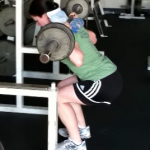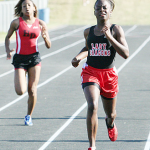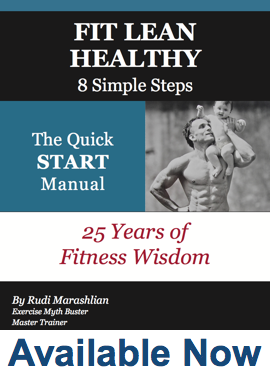There are many terms used quite casually when speaking of fitness and exercise. One very popular one is “aerobics”. There have been aerobics classes in existence now for decades but ask nearly anyone in a gym what it really means and you’ll probably get something like, “Well, it’s when the body uses air to create energy and it’s the best way to burn fat.” Hopefully, after reading this article, you’ll have a better understanding of the word “aerobic” as well as its counterpart, “anaerobic”.
Very simply, the body is composed of cells. There are lots of different kinds of cells but the ones responsible for activity of any kind (running, breathing, digesting, walking, talking, working out and so on) are muscle cells. Let’s focus on the muscles cells involved in moving our skeleton – the skeletal muscle cells. These cells, in order to do any kind of work, need an energy source and that energy source is ATP (adenosine tri-phosphate).
ATP is made from foods – protein, carbohydrate and fat – and each muscle has a tiny store of it at all times, enough to last for a couple of seconds of activity. So you see the problem, in order to do any kind of continuous activity, the muscle cells have to have ways of making more ATP.
Now, luckily, the cells also have a small store of creatine phosphate (a chemical compound) which can be quickly used to make more ATP. This is a very fast process and doesn’t require oxygen (it’s anaerobic) but it only gives about 25 to 30 seconds of high-intensity fuel. Think of activities like weight lifting of 100 meter sprints – power actions, these use this anaerobic energy system.
Going on from there, you see, there needs to be a way to make more ATP otherwise no one could continue moving for longer than half a minute at a time. The next step in order to keep moving is to take the carbohydrate, glycogen, that is stored in the muscle and do some pretty complicated things to it to turn it into ATP (fuel for those muscle cells). It doesn’t need oxygen to do this and so this is an anaerobic activity. Unfortunately, the ATP formed in this way also runs out pretty quickly seeing as the muscles only have a small amount of glycogen at any time. You get about 1 to 2 minutes of high-intensity activity using this system of creating energy. 400 to 800 meter sprints are an example of actions that use this energy system. One of the waste products of this system is lactic acid – this is what you feel when your muscles start to burn during a work out.
Well, one to two minutes is better than a few seconds, but we all know bodies can go on working for much longer than that. There has to be another way of making fuel (ATP) once all the stores have been used from the muscles themselves. Here is where we get into the aerobic energy system. In a very complex chemical reaction involving oxygen and carbohydrates and fat among other things, (the body burns carbohydrates first and then fat in healthy well-fed people; rarely protein) aerobic activity can continue for a long time (look at marathon runners – they can keep running for hours).
All three energy systems are used at all times. The body is a pretty miraculous machine and is constantly replenishing its ATP, creatine-phosphate and glycogen stores even while it’s using oxygen to make more ATP for activity.
The difference between aerobic activity and anaerobic activity? Oxygen and the length of time you can exercise at a particular level. When activity is high intensity but short in time, the anaerobic system runs the show – power lifting, tennis serves, sprints, 100m swims. When activity is lower in intensity and for a longer time it’s the aerobic system that takes over – anything continuing longer than an 800m run.
So it’s something to admire while you’re at the gym working out. Your body, each cell, is doing a complicated series of chemical reactions to make sure you have the fuel you need to do whatever activity you’re doing, from running on the treadmill for thirty minutes to bench-pressing 150 pounds. It’s switching from anaerobic to aerobic systems to keep you going.
Tracey Thatcher






Trackbacks/Pingbacks